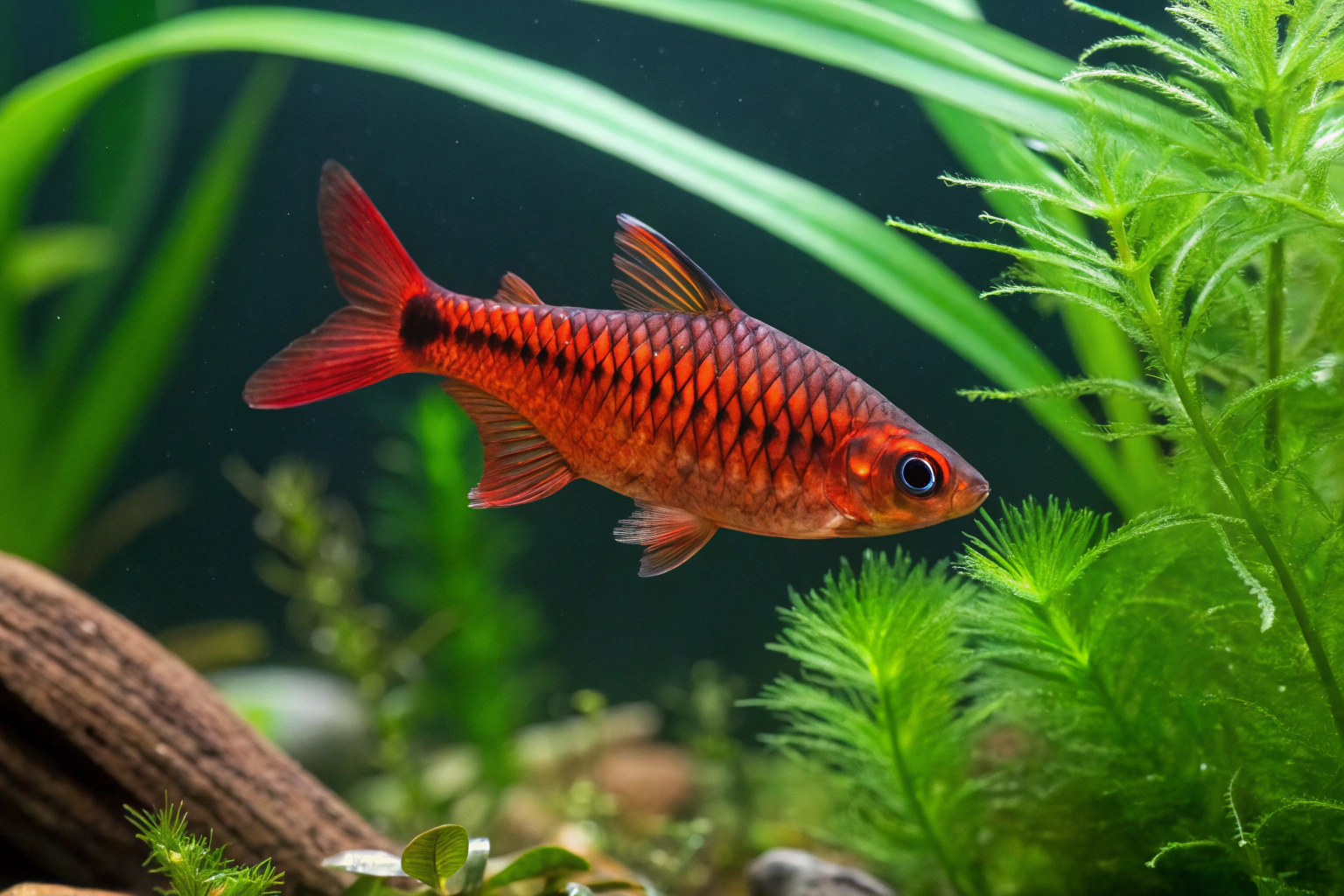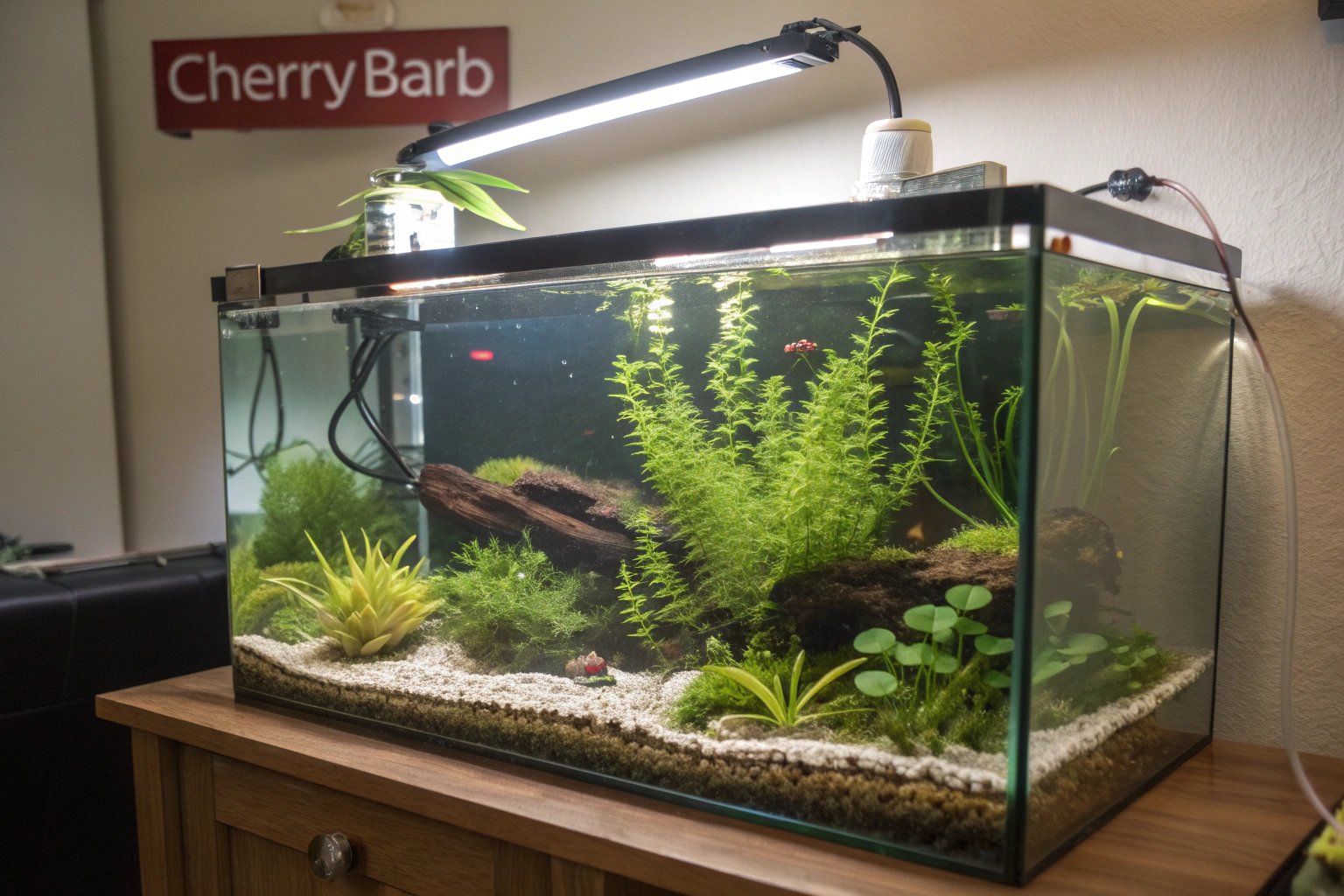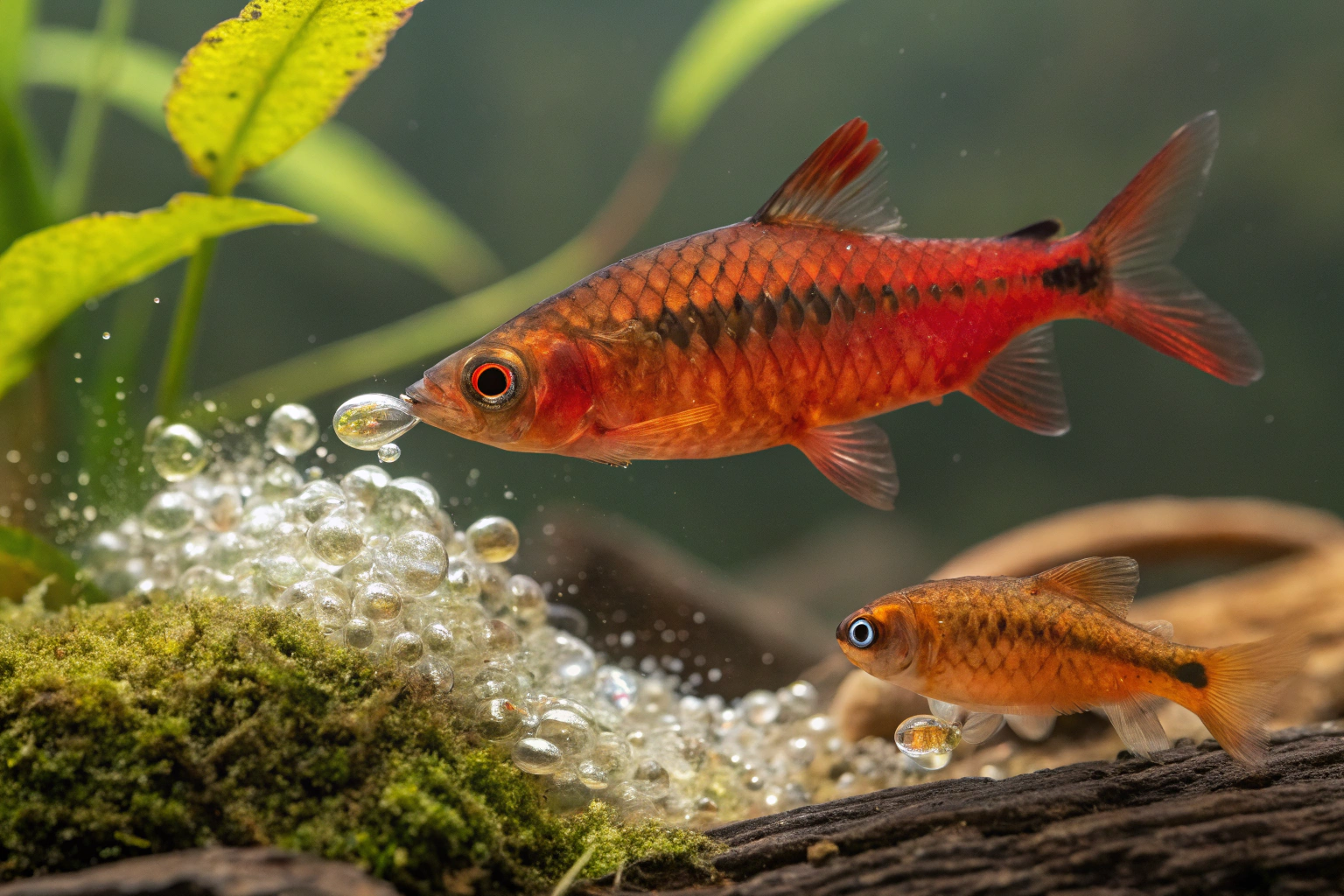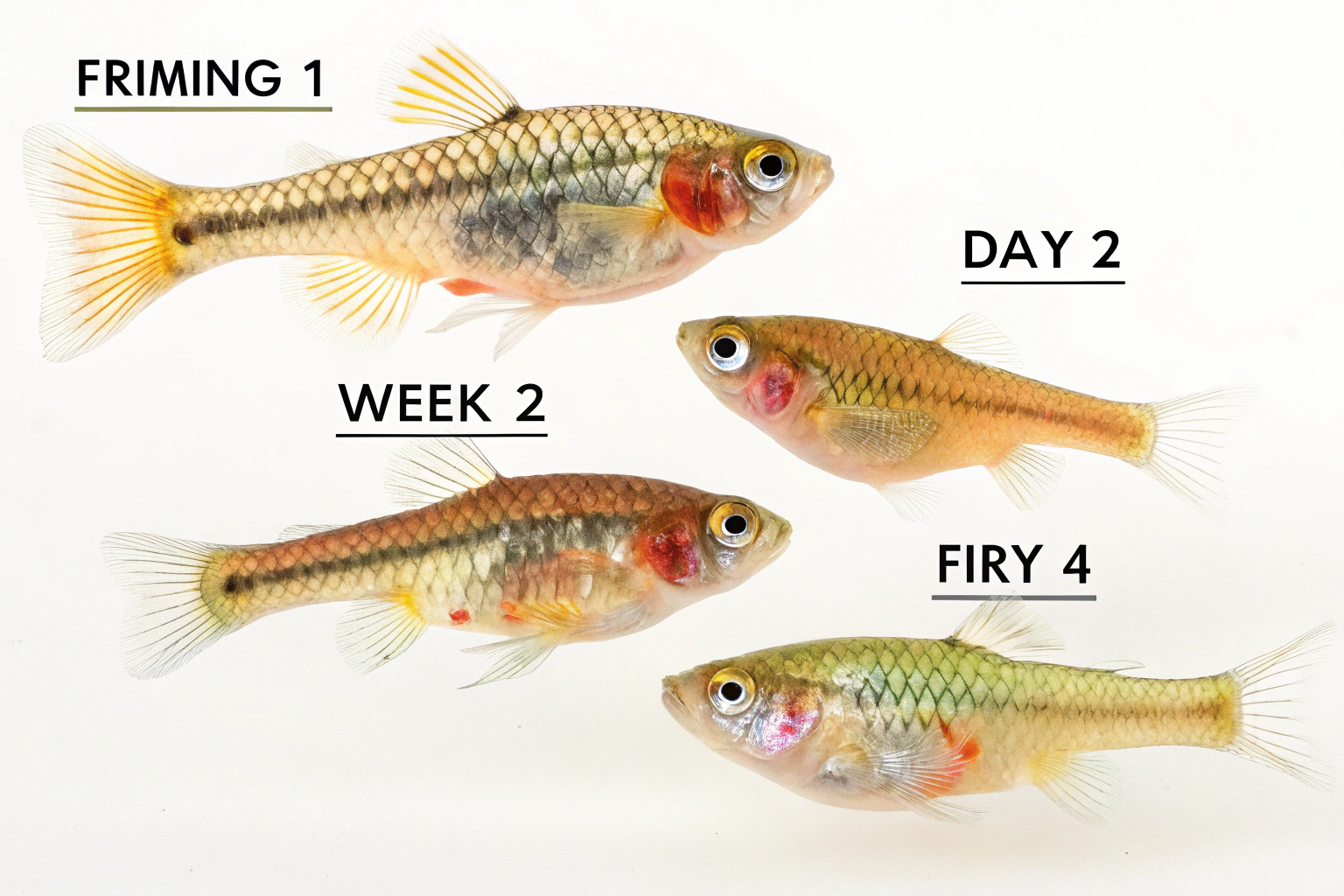How Do You Successfully Breed Cherry Barb Fish at Home? A Complete Guide for Aquarists
This post may contain affiliate links.
Cherry Barb fish (Puntius titteya) are among the most rewarding freshwater fish to breed at home. These vibrant, peaceful fish from Sri Lanka have captivated aquarium enthusiasts worldwide with their stunning red coloration and relatively simple breeding requirements. Whether you’re a beginner looking to expand your aquarium hobby or an experienced breeder seeking to add Cherry Barbs to your collection, this comprehensive guide will walk you through every step of the breeding process.

Understanding Cherry Barb Fish: The Foundation for Successful Breeding
Before diving into the breeding process, it’s essential to understand what makes Cherry Barbs unique. These small, torpedo-shaped fish typically reach 2 inches in length and are known for their peaceful temperament and schooling behavior. The males display brilliant cherry-red coloration during breeding season, while females maintain a more subdued golden-bronze hue with darker vertical stripes.
Cherry Barbs are egg-scattering fish, meaning they don’t provide parental care after spawning. This characteristic makes them relatively easy to breed compared to cichlids or other species that require complex parental behaviors. Their adaptability to various water conditions and hardy nature make them an excellent choice for home breeding projects.
Essential Equipment and Setup for Cherry Barb Breeding
Breeding Tank Requirements
Setting up a dedicated breeding tank is crucial for successful Cherry Barb reproduction. A 10-20 gallon aquarium tank provides adequate space for a breeding pair or small group. The tank should feature gentle aquarium filtration to maintain water quality without creating strong currents that could stress the fish or scatter eggs inappropriately.
Your breeding setup should include fine-leaved aquatic plants like Java moss, Cabomba, or artificial spawning mops. These provide essential surfaces for egg deposition and offer fry protection after hatching. A bare-bottom tank or one with a spawning grid can help prevent adult fish from eating their own eggs.
Water Parameters and Conditioning
Maintaining optimal water conditions is fundamental to breeding success. Cherry Barbs prefer slightly acidic to neutral water with a pH between 6.0-7.0. Temperature should be maintained at 75-79°F (24-26°C) for breeding, slightly warmer than their normal range. Water hardness testing should remain between 5-15 dGH for optimal breeding conditions.
Gradual water changes using aged, dechlorinated water help simulate natural seasonal changes that trigger spawning behavior. Many successful breeders recommend using reverse osmosis water systems remineralized to appropriate levels for consistent results.

Selecting and Conditioning Breeding Stock
Identifying Healthy Breeding Pairs
Choosing the right breeding stock significantly impacts your success rate. Select healthy, mature fish that are at least 6-8 months old. Males should display vibrant red coloration with well-defined fins, while females should appear fuller and rounder when viewed from above, indicating egg development.
Avoid fish showing signs of disease, stress, or poor coloration. The best breeding stock typically comes from reputable local fish stores or established breeders who maintain detailed lineage records. Genetic diversity is important for producing healthy offspring.
Pre-Breeding Conditioning Process
Conditioning your breeding stock for 2-3 weeks before spawning attempts dramatically improves success rates. Feed high-quality aquarium foods including live or frozen bloodworms, brine shrimp, and quality flake food. Protein-rich foods help females develop eggs while maintaining male breeding condition.
During conditioning, maintain pristine water quality with regular partial water changes. Gradually increase feeding frequency to 3-4 small meals daily, ensuring all food is consumed within 2-3 minutes to prevent water quality issues.
The Spawning Process: Step-by-Step Breeding Guide
Triggering Spawning Behavior
Cherry Barbs typically spawn in the early morning hours following specific environmental triggers. A temperature increase using aquarium heaters of 2-3°F combined with a significant water change often initiates spawning behavior. Dimmed lighting and the presence of suitable spawning media encourage natural breeding instincts.
Introduce the conditioned breeding pair to the spawning tank in the evening. Males will begin displaying courtship behaviors, including intensified coloration and chasing behaviors around spawning sites. This courtship phase can last several hours before actual spawning occurs.
Spawning and Egg Management
During spawning, the female will scatter 200-300 sticky eggs among fine-leaved plants or spawning mops. The male follows closely, fertilizing eggs as they’re deposited. This process typically occurs over 1-2 hours in the early morning.
Remove adult fish immediately after spawning to prevent egg predation. Cherry Barb eggs are small, clear, and adhesive, making them somewhat difficult to see against plant matter. Maintaining water temperature at 78-80°F ensures optimal egg development over the next 24-48 hours.

Raising Cherry Barb Fry: From Hatching to Maturity
Fry Care and Feeding
Cherry Barb fry hatch after 24-48 hours, initially remaining attached to surfaces by their yolk sacs. During this period, maintain excellent water quality and avoid disturbing the fry. After 3-4 days, fry become free-swimming and require their first feeding.
Newly hatched fry are extremely small and require microscopic food sources. Infusoria cultures, commercially available liquid fry food, or specially prepared egg yolk solutions provide essential nutrition during the first week. Feed small amounts multiple times daily, ensuring the water remains clear.
Growth and Development Stages
As fry grow, gradually introduce larger food items including microworms, baby brine shrimp, and finely crushed flake food. By 2-3 weeks, fry should be large enough to consume standard fry foods. Regular water changes become increasingly important as bioload increases with growing fish.
Monitor growth rates and separate faster-growing individuals if necessary to prevent competition and ensure even development. Sexual maturity typically occurs at 4-6 months, when young fish begin displaying adult coloration patterns.

Common Breeding Challenges and Solutions
Troubleshooting Spawning Issues
Several factors can prevent successful spawning in Cherry Barbs. Poor water quality, inadequate conditioning, or stress from unsuitable tank mates commonly cause breeding failures. Ensure breeding pairs are properly conditioned and housed in optimal conditions without disturbances. Learn more about common aquarium fish diseases that can affect breeding success.
Age-related fertility issues may occur in older fish, while young fish may not be sexually mature. Maintaining detailed breeding records helps identify patterns and optimize future breeding attempts.
Fry Survival and Health Management
High fry mortality rates often result from poor water quality, inadequate nutrition, or fungal infections. Maintain pristine water conditions through regular partial water changes and efficient aquarium filtration systems. Avoid overfeeding, which can quickly deteriorate water quality in fry tanks.
Fungal infections can devastate fry populations, particularly in overcrowded conditions. Proper tank maintenance, appropriate stocking densities, and quarantine procedures help prevent disease outbreaks.

Advanced Breeding Techniques and Tips
Selective Breeding for Color and Form
Experienced breeders often focus on selective breeding to enhance specific traits like coloration, fin shape, or body conformation. This requires careful record-keeping and multiple generations of selective breeding to achieve desired results.
Maintaining separate breeding lines and outcrossing periodically helps prevent inbreeding depression while preserving desirable characteristics. This advanced approach requires significant dedication and multiple tank systems.
Commercial Breeding Considerations
For those interested in breeding Cherry Barbs commercially, understanding market demands and maintaining consistent quality becomes essential. Developing relationships with local fish stores and understanding seasonal demand patterns helps ensure profitable breeding operations.
Proper quarantine procedures, health certification, and transportation methods become critical when selling breeding stock or offspring to other aquarists or retailers.
Conclusion: Mastering Cherry Barb Breeding Success
Successfully breeding Cherry Barb fish at home requires patience, dedication, and attention to detail. By following these comprehensive guidelines and maintaining optimal conditions throughout the breeding process, you can enjoy the rewarding experience of raising these beautiful fish from egg to adult.
Remember that breeding success often improves with experience, so don’t be discouraged by initial setbacks. Each breeding attempt provides valuable learning opportunities that contribute to long-term success. With proper preparation, conditioning, and care, you’ll soon be enjoying the satisfaction of successfully breeding Cherry Barbs in your home aquarium.
The key to consistent breeding success lies in understanding your fish’s natural behaviors, maintaining excellent water quality, and providing appropriate nutrition throughout all life stages. Whether breeding for personal enjoyment or commercial purposes, Cherry Barbs offer an excellent introduction to the fascinating world of freshwater fish breeding.
This comprehensive guide provides the foundation for successful Cherry Barb breeding. For additional resources on aquarium setup guides, water quality management, and advanced fish breeding techniques, continue exploring our extensive collection of aquarium care guides and expert breeding advice.
